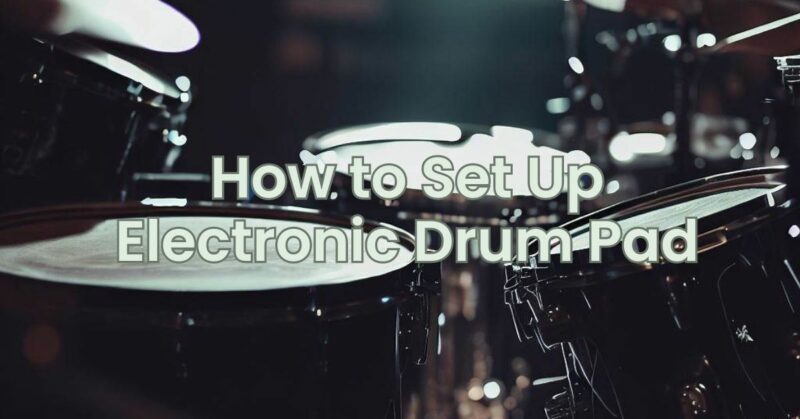Electronic drum pads offer a versatile and convenient way for drummers to practice and perform without the need for a full-sized acoustic drum set. Setting up an electronic drum pad may seem overwhelming at first, but with a little guidance, it can be a straightforward process. In this article, we will provide you with a step-by-step guide on how to set up an electronic drum pad so you can start playing and enjoying your new instrument in no time.
Step 1: Unboxing and Inspection When you receive your electronic drum pad, carefully unbox and inspect the contents to ensure everything is included and undamaged. Typical components may include drum pads, a control module, drum rack, cabling, power supply, and drumsticks. If anything is missing or damaged, contact the manufacturer or retailer for assistance.
Step 2: Assemble the Drum Rack Begin by assembling the drum rack according to the manufacturer’s instructions. Typically, this involves attaching the vertical bars and crossbars to create a stable structure to hold the drum pads. Ensure all connections are tightened securely to avoid any wobbling or instability during play.
Step 3: Positioning the Drum Pads Place the drum pads on the drum rack in the desired positions. The configuration can vary based on personal preference and the number of drum pads you have. Common setups feature a snare drum pad in the center, with tom pads on each side. The cymbal pads can be positioned above the snare or to the sides. Adjust the angle and height of the pads to suit your playing style and comfort.
Step 4: Connecting the Drum Pads Using the provided cables, connect each drum pad to the control module. Typically, each pad will have a designated input on the module labeled with the corresponding pad name (e.g., snare, tom, cymbal). Insert the cable into the pad’s input and securely tighten the connection. Repeat this process for all the drum pads.
Step 5: Connecting the Control Module Locate the control module and connect it to a power source using the included power supply. Ensure the power supply is compatible with your local voltage requirements. Once connected, power on the module and follow any initial setup instructions provided in the user manual.
Step 6: Adjusting and Fine-tuning Once the drum pads and module are connected, it’s time to fine-tune the settings to meet your preferences. Refer to the user manual for instructions on adjusting sensitivity, volume, and other parameters. You may also need to calibrate the drum pads to ensure accurate triggering.
Step 7: Audio Output and Monitoring To listen to your drumming, connect the control module’s audio outputs to an amplifier, headphones, or a computer audio interface. Depending on the available options, you may use ¼-inch audio cables, MIDI cables, or USB connections. Ensure the audio output settings on the module are correctly configured to match your desired audio setup.
Step 8: Testing and Troubleshooting Before starting your practice session, perform a quick test to ensure all the drum pads are functioning correctly. Strike each pad individually and verify that the corresponding sound is triggered on the control module. If you encounter any issues, consult the user manual’s troubleshooting section or contact technical support for assistance.
Conclusion: Setting up an electronic drum pad requires careful assembly, connection, and adjustment to ensure an optimal playing experience. By following this step-by-step guide, you can quickly and effectively set up your electronic drum pad and begin enjoying the wide range of drumming possibilities it offers. Remember to refer to the user manual provided with your specific drum pad model for detailed instructions and troubleshooting information. Now, go ahead, have fun, and unleash your rhythmon your new electronic drum pad!


